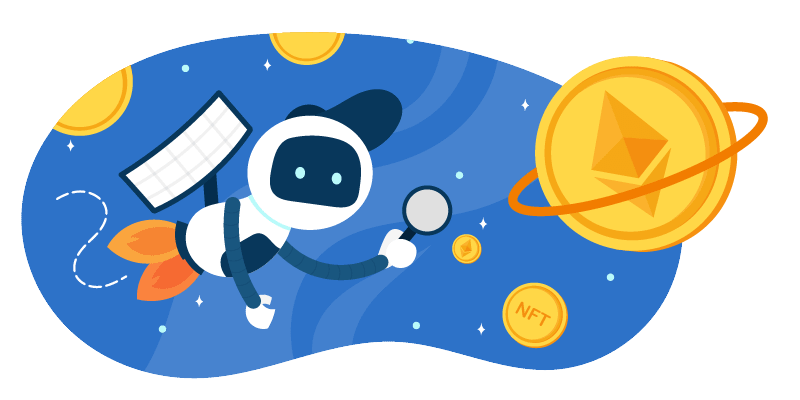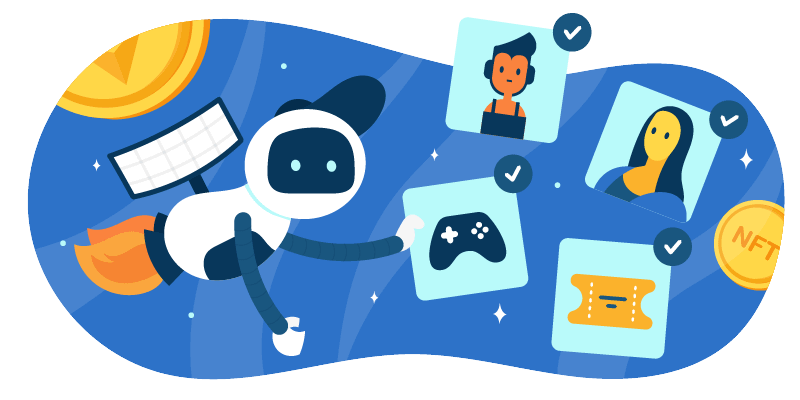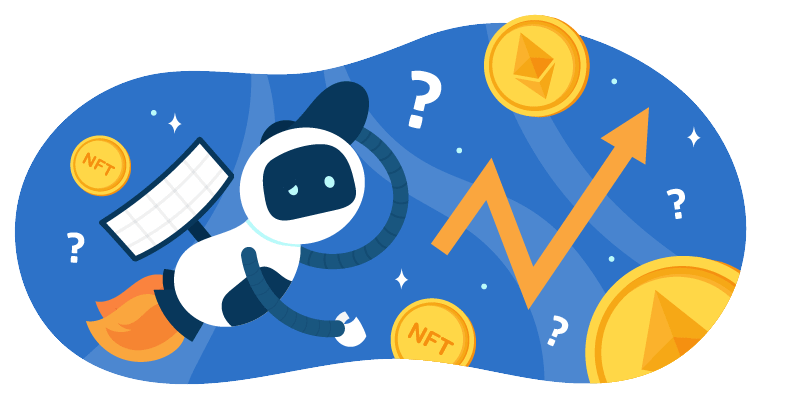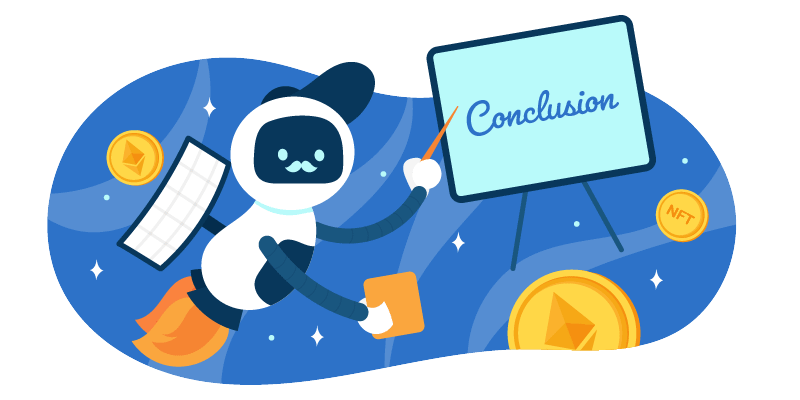

What is NFT?
NFTs seem to be all the rage right now. In fact, you can’t seem to go anywhere online without seeing a mention of NFTs. So what are they? And are they here to stay? This article will answer both questions and more as we explore the exciting world of non-fungible tokens.

What is an NFT?
 An NFT is a non-fungible token, which is a type of cryptocurrency that is unique and cannot be replaced. You see, fungible assets are interchangeable. So if you have two one-dollar bills, they are interchangeable because they both have the same value and can be used in any situation where a dollar is needed.
An NFT is a non-fungible token, which is a type of cryptocurrency that is unique and cannot be replaced. You see, fungible assets are interchangeable. So if you have two one-dollar bills, they are interchangeable because they both have the same value and can be used in any situation where a dollar is needed.
But an NFT is completely different. It’s not meant to be exchanged for another NFT, and it can’t be replaced with something else if you lose it or damage it in some way. There is only one.
For example, how many Mona Lisa paintings exist in the world? Only one. That’s what makes it so valuable and unique, right? Well, that’s exactly how an NFT works too.
This unique nature of NFTs makes them perfect for representing valuable assets such as art, collectibles, and even real estate.
Can’t I Just Screenshot an NFT?
 When you take a screenshot, you are only capturing the image on your screen. You are not actually capturing the underlying data or asset. So while you can do it, you can’t prove that you own that NFT.
When you take a screenshot, you are only capturing the image on your screen. You are not actually capturing the underlying data or asset. So while you can do it, you can’t prove that you own that NFT.
For example, you could print out a picture of the Mona Lisa, or any other famous piece of artwork, but that doesn’t mean you own the painting. It just means you have a picture of it.
This is why blockchain technology is so important for NFTs. You see, the blockchain is a decentralized digital ledger that stores information and transactions. And when you buy an NFT on a blockchain, like Ethereum, it’s recorded in this public ledger that can never be changed or edited.
The key thing to remember here is that your NFT isn’t just some picture file with no meaning attached to it. It’s actually linked to an asset on the blockchain, which is why you need a wallet that supports Ethereum in order to buy and store them.
How Are NFTs Created?
 Now that we have covered the basics of what NFTs are, let’s take a look at how they work and how they are created.
Now that we have covered the basics of what NFTs are, let’s take a look at how they work and how they are created.
NFTs are created through tokenization. This is when you take a digital asset, such as art or an in-game item, and make it into a token that can be traded on the blockchain.
With NFTs, the digital assets tend to be pictures or animations. These assets are tokenized and made into NFTs by being minted to a specific address on the blockchain. Minting is the technical term that describes the process of turning digital files into non-fungible tokens.
Most of today’s NFTs are minted onto the Ethereum blockchain, but there are a few other blockchains that are starting to be used for this purpose as well. For example, the Solana blockchain is starting to be used for NFTs in the gaming industry.
Let’s Get Technical…
 We’ve talked about how NFTs are created, but what does this actually mean in technical terms? What does it mean to own an NFT?
We’ve talked about how NFTs are created, but what does this actually mean in technical terms? What does it mean to own an NFT?
First and foremost, it’s important to note that an NFT is data stored on a blockchain. It’s this data you’re buying when you purchase an NFT, not just the file itself. What you own is a cryptographic key that links to the digital asset.
Secondly, owning an NFT doesn’t mean you can use the image as you wish. While you can prove that you own that specific asset by showing your crypto wallet, you are still restricted by copyright law and the terms & conditions of the original creator.
For example, if you bought an NFT of the Adidas logo, do you think you could make your own T-shirts and sell them? Nope, you can’t. You would be infringing on Adidas’ copyright.
However, there are some cases where the creator of an NFT has decided to give users more freedom. For example, the game Cryptokitties allows players to breed their kitties and sell them for Ethereum. The project also allowed holders to sell their own merch, but the earnings can’t exceed $100,000.
What Can NFTs be Used for?
 Now that we know what NFTs are and how they work, let’s take a look at some of the use cases for these tokens.
Now that we know what NFTs are and how they work, let’s take a look at some of the use cases for these tokens.
The most popular use case is for art and collectibles, but there are actually many more uses than just those. In fact, several industries have already started adopting this technology on a large scale.
Some of the most popular uses cases include:
Collectibles: As we mentioned earlier, NFTs are perfect for collecting rare art and animations. In fact, some art collectors are even starting to specialize in NFTs.
Gaming: Online gaming is a multi-billion dollar industry, and NFTs are starting to be used more and more in this space. For example, the game Thetan Arena allows players to collect digital cards, which can then be traded for real money. The game also allows players to trade in-game NFTS, such as weapons and armor.
Real Estate: One of the most exciting and potential uses for NFTs is in the real estate industry. For example, a company called Propy is using NFTs to create a global property registry that can be used by anyone.
Identity: Another interesting use case for NFTs is digital identities. For example, a project called Civic is using NFTs to allow citizens to prove their identity without the need for passports or driver’s licenses.
Ticketing: Ticketing is another industry that could be disrupted by NFTs. It would remove the need for paper tickets, which are easily forged. Instead, you would have a single NFT that is linked to your crypto wallet. For example, a company called Aventus is using NFTs to create a global ticketing system that is fraud-proof.
It’s clear that NFTs have a lot of potential uses, and we can only expect this list to grow in the future. NFTs are more than just a passing trend, they are the future of digital ownership.
However, if NFTs are to become mainstream, there are a few obstacles that need to be overcome first. Let’s take a look at some of these challenges in the next section.
Some Challenges for NFTs
 As you can see from the examples above, NFTs have the potential to disrupt many different industries and become mainstream over time. However, there are still a few challenges that need to be overcome before this can happen.
As you can see from the examples above, NFTs have the potential to disrupt many different industries and become mainstream over time. However, there are still a few challenges that need to be overcome before this can happen.
Adoption: One of the biggest challenges is user adoption. Most people are still not familiar with blockchain technology, let alone NFTs. Until more people understand how these work and what they can be used for, it will be difficult for them to take off.
Regulation: Another challenge is regulation. As NFTs become more popular, governments will likely start to regulate them. This could have a negative impact on the industry as a whole.
Scalability: The blockchain industry is still quite young and has some issues with scalability. For example, the Ethereum blockchain can only handle about 15 transactions per second. This means that NFTs could have trouble growing to mainstream use if this problem isn’t fixed.
In fact, the gas fees to use the Ethereum blockchain are currently remarkably high, which are a deterrent for some users. The good news is that alternative blockchains are being developed that can solve these issues.
Solana is one such example of a blockchain that is designed for scalability. It can handle up to 700,000 transactions per second, which is much higher than the current blockchains. This is why some NFT marketplaces and gaming platforms are building on the platform.
There are also Layer-2 solutions, which alleviate the load on the main blockchain. Loopring and Polygon are two examples of Layer-2 solutions that are already making it cheaper to interact with the Ethereum blockchain.
Laundering: One of the biggest challenges for NFTs is preventing them from being used for money laundering and other illegal activities. This is a problem that all cryptocurrencies face, but it is especially difficult to combat with NFTs since they are so new and have yet to be regulated.
Centralized Servers: NFTs are stored on decentralized blockchains, but some centralized servers are still needed to act as intermediaries. Not many NFT enthusiasts are aware that Infura, a centralized server, is used for most dApps. In fact, your NFT image can appear different on various platforms.
This is something that we need to be aware of as the industry grows, but hopefully, there will be a solution in the future that allows us to interact with NFTs in a purely decentralized way.
Climate Concerns: One of the most concerning issues with blockchain technology is its environmental impact. The process used to mine cryptocurrencies consumes a lot of energy, which contributes to climate change and global warming. This is something that needs to be addressed in the future if we want NFTs and other forms of cryptocurrency to become mainstream.
Where Can I Buy NFTs?
 There are dozens of platforms where you can buy and sell NFTs. Some of the most popular ones are OpenSea, Rarible, SuperRare, KnownOrigin, and Mintable. Each platform has a different focus and caters to various types of artists.
There are dozens of platforms where you can buy and sell NFTs. Some of the most popular ones are OpenSea, Rarible, SuperRare, KnownOrigin, and Mintable. Each platform has a different focus and caters to various types of artists.
OpenSea is by far the most popular and has a lot of NFTs available for purchase. In fact, $billions are traded on the exchange every month. The platform supports various blockchains, has a user-friendly interface, and allows you to buy and sell NFTs with ease.
FAQ

Conclusion
 In conclusion, NFTs are non-fungible tokens that are unique and can’t be replaced by another token. They represent digital assets that can be used in a variety of ways, depending on the creator’s rules.
In conclusion, NFTs are non-fungible tokens that are unique and can’t be replaced by another token. They represent digital assets that can be used in a variety of ways, depending on the creator’s rules.
These NFTs are currently used to prove ownership of artwork, but there is potential for much more. In fact, Snoop Dogg believes all tickets will soon be NFTs. As the industry grows, it’s important to stay informed about the latest news and developments in order to make sound investment decisions.
I hope this article has helped you understand NFTs better. If you have any questions, why not join our Facebook Group, Reddit Community, Telegram Group, or Discord Group and get answers to your questions from our community..
